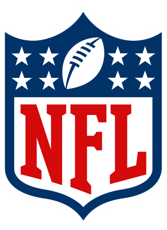National Football League - The Business Behind the Pigskin

I've always been a sports fan. Growing up in the Baltimore, MD area, I quickly fell in love with the Baltimore Ravens. Ray Lewis, Jamal Lewis, Ed Reed, Jonathan Ogden - these guys were legends throughout childhood.
Despite the depth of trivia related knowledge an average football fan maintains, most, including myself, don't seem to have a grasp on how the BUSINESS of the NFL works. Amidst the aftermath of another epic Superbowl event, I thought I'd do a little digging on how this entertainment superpower works. What follows is an illustrative breakdown of the money machine behind the NFL. Enjoy!
Overview
The way to break down the business of the NFL is to think of it in 2 parts: (i) the League level and (ii) the Team level. The relationship between the two are symbiotic, but the underlying businesses models are entirely different. Let's start at the League level.

The NFL - An Advertising Behemoth
The NFL is an advertising business. In a world that is migrating towards DTC and streaming, the NFL has been a stalwart in the entertainment space which has maintained its 'appointment viewing' status and continues to command the largest audiences on television. In 2021, the NFL captured 23 of the 25 most watched telecasts in the U.S. - that is media domination plain and simple. The ability for the NFL to continue to command this level of attention translates to very lucrative advertising contracts with "The Big 5" (CBS, NBC, ABC (ESPN), FOX and now Amazon).
The NFL (league level) currently generates ~$10bn of revenue per year, with 50-60% ($5-6bn) of this revenue driven by annual content licensing deals amongst the Big 5. These agreements are 8 - 10 years in duration and provide high-visibility cash flows which the league can use to invest and grow the league.
The League also has several other media properties: NFL Sunday (which is licensed to DirecTV), NFL Network and NFL Redzone which are both NFL owned assets. These media properties contribute another ~20-25% of revenue ($2-2.5bn) to the NFL's top line.
From these revenue streams, the NFL can cover its entire staff headcount (1,200+ league level employees), along with production expenses associated with its owned and operated media properties. Total league level operating expenses are ~$1.5bn, which leaves the NFL with annual operating income of ~$8.5bn ($10bn revenue less $1.5bn of expense).
What is interesting about this business is what the NFL does with this big pile of cash.... They give it away!! They take this $8.5bn money bag and distribute it equally among the 32 teams - this works out to $260-275mm of cash flow per team each year! Not bad huh?!
Here is a visual representation:

Now let's look at the Team-level business.
Team Level - Not an Enviable Business Model
Team Level revenue is comprised of three primary buckets:
- NFL League Revenue Share (~65% of Revenue, discussed above)
- Local Sponsorships (~15-20% of Revenue)
- Gameday Ticket Sales (~10% of Revenue)
Since the League Side revenue is not directly related to team operations - most owners are focused on how to optimize the last two buckets (sponsorships and ticket sales). Certain teams with dramatic gameday experiences and fan followings (Cowboys, Patriots) can command higher sponsorship monetization than smaller market teams (Jaguars, Buccaneers). In my view, the ability to attract and sell local sponsorships are really what determines profitability at the team level. There is only so much juice available to squeeze from ticket sales, as outlined below.
To illustrate: Average non-Covid NFL game attendance is ~60,000 fans per game, avg ticket prices are ~$100-120 with 8 or 9 home games per year. This equates to $6-8mm of gameday ticket revenue with another $2-4mm from suite/box sales (~$10mm total). Industry estimates peg gameday operating costs anywhere from $5-10mm per game! Translation, tickets are maybe a profit center... maybe... closer to a break-even transaction.
Butts in the seats does provide teams with the opportunity to monetize fan attention by plastering local sponsors throughout the stadium, plugging brands during game breaks, halftime, etc.
NFL team ownership does not bring a promise of high free cash flow levels to the owners... at least not relative to what they paid for the pleasure to join this elite ownership club.
NFL teams have been said to generate anywhere between -$50mm operating LOSS to potential operating income up to $250mm for top performing franchises. Here is a summary P&L of the team level business discussed above:

The median NFL franchise value today is somewhere between $3-3.5bn... Based on an optimistic median franchise income of $100-200mm per year, you're looking at EV or Purchase Multiples of 25-30x earnings (or a 3-4% cash flow yield).
You can find these types of multiples / yields on publicly traded companies associated with high flying, fast growing, recurring revenue tech companies... a very different growth and margin profile than a sleepy but stout NFL franchise. NFL owners aren't buying these assets with the intent to generate a compelling financial rate of return.
NFL owners want to own a piece of Americana, to play a role in the entertainment culture of this country and perhaps to be close to a game they love.
I hope you enjoyed this breakdown of the NFL and that it provides an appreciation for the complexity and powers at play which make America's most loved sport a reality. For more on this, check out this podcast which was the foundation for the write-up of this article.
If you are enjoy receiving content like this, hit the subscribe button to have future posts delivered directly to your inbox
Stay Tuned, Ryan
P.S. - As a bold request of anyone reading... my vision this year is to reach an audience of 5,000 people. If you know anyone who may like this article or if you have advice on strategies to reaching this goal, I'd love your input!